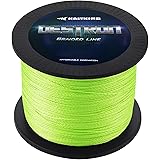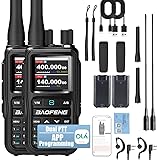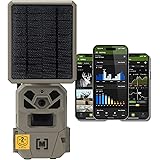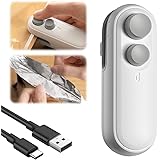Imagine this: you’re out in the wilderness, or perhaps just on a road trip, and suddenly, you’re faced with an unexpected challenge. Maybe your shoes get soaked, you need a quick way to purify water, or even start a fire without matches. In these moments, panic can easily set in, but what if you had a few clever tricks up your sleeve?
The video above brilliantly showcases a collection of survival hacks that are surprisingly simple yet incredibly effective. These aren’t just for extreme situations; many of these tips can be used in everyday scenarios, making you feel more prepared and self-reliant. It’s often said that preparedness is key, and with these easy-to-learn tricks, you can be ready for a wide range of common mishaps and minor emergencies.
Learning these essential skills means you won’t be caught off guard. From improvising tools to protecting yourself from the elements, these practical tips can truly make a difference. Let’s dive deeper into some of the most valuable survival tips hinted at in the video and explore how they can be applied in real-life situations, enhancing your general preparedness and wilderness survival skills.
Essential Survival Hacks: Be Prepared for Anything
When unexpected situations arise, having a few clever survival hacks can be incredibly empowering. These simple techniques can transform common items into lifesavers or provide quick solutions when traditional tools aren’t available. Mastering these basic concepts is a step towards self-reliance and confidence in any environment.
Water Purification: A Lifeline in the Wild
Access to clean drinking water is paramount for survival. The video briefly illustrates a layered filtration system using readily available materials. This improvised water filter is a cornerstone of emergency preparedness.
Building a DIY Water Filter
A basic filter can be constructed using a container, like a cut-off plastic bottle, and layering materials. First, a piece of cloth is placed at the bottom to hold everything in. Then, layers of sand and charcoal are added. The process is often explained with the following layers from bottom to top:
- Cloth: This acts as the initial barrier, preventing larger debris from entering the system. It helps to keep the other layers in place.
- Fine Sand: This layer is effective at filtering out smaller particles and sediments. Think of it like a very fine sieve.
- Coarse Sand: This layer helps to further remove suspended solids and acts as a support for the finer sand.
- Charcoal: Activated charcoal is crucial as it absorbs impurities, odors, and some chemicals from the water. This is much like how filters in home water pitchers work, cleaning the water and improving its taste.
- Stones/Gravel: These layers are placed at the top and bottom to help drain water and prevent the finer materials from washing away.
Water is then poured through these layers. While this method can remove many physical impurities, it is important to remember that it may not eliminate all bacteria or viruses. For truly safe drinking water, filtration should ideally be followed by boiling the water for at least one minute.
Fire Starting: Igniting Hope with Improvised Tools
Fire provides warmth, light, a means to cook, and psychological comfort. The video demonstrates a surprisingly simple method for starting a fire: using a battery and steel wool. This method relies on basic electrical principles to create enough heat to ignite tinder.
The Battery and Steel Wool Method
When fine steel wool is touched to the terminals of a battery, especially a 9-volt battery, a short circuit is created. The electrical current heats the thin strands of steel wool rapidly, causing them to glow and then ignite. It’s similar to how a light bulb filament glows when electricity passes through it, but here, the resistance in the steel wool is much higher, generating significant heat. This glowing steel wool can then be used to ignite highly flammable tinder, such as cotton wool, dry leaves, or fine bark.
Care must be taken when using this method, as the steel wool can ignite very quickly. It is always recommended that you have your tinder prepared and ready to catch the spark as soon as it appears. Proper preparation of a fire lay is essential for success, ensuring all fuel sources are dry and arranged correctly.
Improvised Solutions: Making Do with What You Have
A core principle of wilderness survival skills is resourcefulness. The video touches on several quick fixes for common problems, highlighting that with a little creativity, many everyday items can serve multiple purposes.
No Pump? No Problem!
If a pump is unavailable, a siphoning method can often be used to transfer liquids. This involves creating a vacuum or using gravity to move fluid from a higher container to a lower one. For instance, a length of tubing can be used; once filled with liquid and sealed at both ends, one end is placed in the source and the other in the destination, with the destination end being lower. Gravity then does the rest, pulling the liquid through.
Cooking Without a Frying Pan
Cooking surfaces can be improvised in various ways. A flat, heat-resistant rock can be heated near a fire and then used as a griddle for cooking flatbreads or thin pieces of meat. Heavy-duty aluminum foil can also be fashioned into a makeshift pan or used to wrap food and cook directly in the coals. Even a clean, empty tin can be used as a small pot for boiling water or cooking stews over a flame.
Personal Comfort and Protection in the Wild
Protecting yourself from the elements and ensuring personal comfort can significantly impact morale and health in a survival situation. Simple items can offer surprising versatility.
The Many Uses of Vaseline
Vaseline, or petroleum jelly, is a surprisingly versatile item for emergency preparedness. It can be used as a skin protectant against chapping and windburn, a lubricant for various mechanisms, or even as a fire starter. When spread on a cotton ball, Vaseline creates a long-burning tinder that is highly effective in igniting a fire, even in damp conditions. Its ability to repel water also makes it useful for protecting small wounds or keeping matches dry.
Yoga Mat for Protection
A yoga mat, often thought of for exercise, can be a surprisingly useful item for outdoor activities or emergency situations. It provides insulation from cold ground, making it an excellent sleeping pad to prevent hypothermia. Its thick, soft material can also be cut and used as padding for improvised splints or to protect sensitive gear from punctures. This highlights how easily common items can be adapted for survival purposes.
Waterproof Footwear Solutions
Keeping feet dry is critical for preventing blisters, frostbite, and discomfort. If your footwear isn’t waterproof, simple survival hacks can help. Plastic bags, like grocery bags, can be placed over socks before putting on shoes for a temporary waterproof layer. For a more robust solution, rubbing wax (like candle wax) thoroughly into canvas or leather shoes, and then gently heating it with a hairdryer, can create a water-resistant barrier. This treatment works by filling the pores of the material, making it more difficult for water to penetrate.
Efficient Packing and Organization for Outdoor Survival
How you pack and carry your gear can significantly impact your mobility and readiness. The video touches upon “a carrier” and “compact storage,” reminding us that smart organization is key.
Improvised Carriers and Compact Storage
If you lack a proper backpack, a sturdy piece of fabric or even a large shirt can be fashioned into a simple carrier or sling to transport essential items. When packing, utilizing space efficiently is crucial. Rolling clothes tightly, removing excess packaging, and using compression sacks are all effective strategies for compact storage. This ensures that more vital gear can be carried without unnecessary bulk, which is a significant aspect of mastering effective outdoor survival.
How to Wind Up Some Rope
Properly coiling rope is more than just neatness; it prevents tangles and ensures it’s ready for immediate use. A common method involves winding the rope around your hand and elbow, creating consistent loops. Once wound, a smaller piece of rope can be used to secure the bundle, preventing it from unraveling. This technique is often used in maritime and climbing communities for its efficiency and reliability.
Everyday Preparedness: Safety and Quick Fixes
Beyond the wilderness, survival tips also extend to everyday situations, including travel safety and quick fixes around the house or on the road.
Sticky Tape When On the Road
Duct tape, or strong sticky tape, is a minimalist’s best friend. On the road, it can be used for temporary repairs on gear, patching holes in tents, sealing bags, or even as an emergency bandage. Its versatility makes it an indispensable item for any traveler or outdoor enthusiast. This common item is often cited as a crucial component of any basic survival kit.
Toothpaste and Nail Polish: Beyond Oral Hygiene and Manicures
These common household items have surprising secondary uses. Toothpaste, beyond cleaning teeth, can be used to polish dull metal, clean dirty shoes, or even soothe insect bites. The mild abrasives and antiseptics in toothpaste make it effective for these purposes. Nail polish, especially clear polish, can be used to seal frayed rope ends, prevent small holes in fabric from expanding, waterproof matches, or even tighten loose screws by acting as a temporary thread lock. These are prime examples of quick survival fixes using what’s available.
Money Safety Tips for Travelers: Navigating the Urban Jungle
The video also briefly mentions “8 Money Safety Tips for Travelers,” underscoring that preparedness isn’t just about the wilderness. Financial security while traveling is a crucial aspect of overall safety. Here are some general practices that are often recommended for travelers:
- Divide Your Money: Do not carry all your cash and cards in one place. Spread them across different pockets, a money belt, and your main luggage.
- Use a Money Belt or Hidden Pouch: Keep larger sums of cash and essential cards in a discreet, close-to-body pouch, away from pickpockets.
- Be Discreet with Cash: Avoid flashing large amounts of money in public. Try to pay with smaller denominations when possible.
- Memorize Emergency Numbers: Know how to contact your bank or credit card company immediately if a card is lost or stolen.
- Inform Your Bank of Travel Plans: This prevents your bank from flagging unusual transactions as fraud and freezing your accounts.
- Use ATMs Safely: Opt for ATMs inside banks or well-lit, busy areas. Be aware of your surroundings and check for skimming devices.
- Keep Copies of Important Documents: Store digital and physical copies of your passport, visa, and credit card numbers (but not the security codes) separately.
- Consider Travel Insurance: This can offer protection against financial losses due to theft, lost luggage, or medical emergencies.
These strategies help to mitigate risks and ensure that financial setbacks don’t derail your travel plans. By being mindful of these practices, a traveler can significantly enhance their personal security and enjoy their journey with greater peace of mind, showcasing another facet of essential survival tips.











